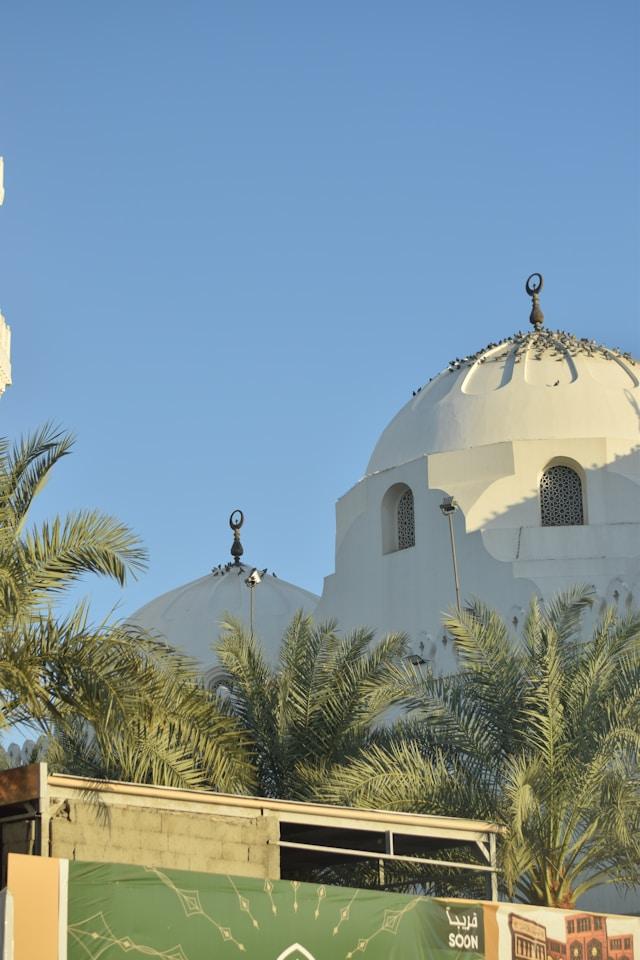- Grupo Público
- 161 Publicações
- 3 fotos
- 0 Vídeos
- History and Facts
Atualizações Recentes
- Boys learn from what they see, so let's show them what it means to be a good man0 Comentários 1 Compartilhamentos 226 Visualizações 0 AnteriorFaça Login para curtir, compartilhar e comentar!
- WINDOW TAX
In England, William III once introduced the Window Tax, taxing houses based on the number of windows they had. That's why some houses have found the solution to brick the windows.
This tax was first imposed in England in 1696. It was intended to be a progressive tax in that houses with a smaller number of windows, initially, ten were subject to a 2 shilling house tax but exempt from the window tax. Houses with more than ten windows were liable for additional taxes which increased in line with the number of windows. The poorest, who were more likely to live in houses with fewer windows, were therefore in theory, taxed less.
This principle generally worked when applied to the rural poor, but failed to alleviate the tax burden on the urban poor. In towns and cities, it was unusual for the working classes to live in individual homes. They would usually live in large tenement buildings which, however, had been subdivided, were considered to be one dwelling house under the terms of the tax, and therefore subject to heavy window tax assessments.
Although deeply unpopular, the tax survived until the mid-nineteenth century. The negative effects of the lack of adequate light and ventilation were becoming so well documented that a popular campaign against the tax began to gain strength. A motion to repeal the tax failed by three votes in April 1850. A national campaign against the tax followed throughout 1850 and 1851, and it is against this background that Sunderland's petition should be seen. The tax was repealed in 1851.
Source: Ultimate Facts
🖼https://www.sash-windows.co.uk/daylight-robbery-the-taxing-problem-of-too-many-windows/
By *Muhammad Dangiwa*
0 Comentários 1 Compartilhamentos 232 Visualizações 0 Anterior - Paraguay
The Paraguay River serves as a natural border between the countries: 328 km separate Paraguay and Brazil, 390 km separate Paraguay and Argentina, and 57 km separate Brazil and Bolivia 🏞
The majestic river connects and separates these states.
Source:Telegram@Amazing World and Travel
https://t.me/amazingworldtravel/577
By *Muhammad Dangiwa*
0 Comentários 1 Compartilhamentos 239 Visualizações 45 0 Anterior - QUBA MOSQUE
Quba Mosque is the oldest mosque in Madinah; it was built in 622, after the shows up Islam religion.
Quba Mosque to the south of Madinah is the second largest and prestigious mosque in the city after the Prophet’s Mosque but claims the first place owing to its importance in Islamic history having been built in the first year of the Islamic calendar.
Its first stones were positioned by Muhammad as soon as he arrived on his emigration from the city of Mecca to Medina, and the mosque was completed by his companions. Muhammad spent 14 days in this mosque praying qasr while waiting for Ali to arrive in Medina after the latter stayed behind in Mecca to carry out a couple of tasks entrusted to him by the Prophet. Also going along with traditional saying, this mosque is said to be where the first Friday prayer was held, led by the Prophet Muhammad.
The prestigious and unique characteristics of Quba Mosque compared to other mosques are cited in this Hadith narrated by the Prophet: “Whoever makes ablutions in this house and offers one prayer therein, will be rewarded the equivalent of one Umrah.”
In the past centuries, Muslims have accorded Quba Mosque much attention. It was renovated by a number of caliphs of the period. The third Caliph Uthman ibn Affan made the first renovations. Caliph Omar bin Abdul Aziz built the mosque’s first minaret. It was renovated again by Abu Yali Al-Husaini who constructed a prayer niche known as the “Mihrab.”
Source: Ultimate Facts
https://unsplash.com/photos/white-and-brown-concrete-building-0V5hSv0dWco?utm_content=creditShareLink&utm_medium=referral&utm_source=unsplash
By *Muhammad Dangiwa*0 Comentários 1 Compartilhamentos 253 Visualizações 0 Anterior - Golden Gate Bridge
The Golden Gate uses the largest bridge cables ever made, long enough to encircle the world more than three times at the equator.
The Golden Gate Bridge's builders introduced many innovations, but perhaps the most impressive was the precise and efficient technique they used to construct the massive cables.
The bridge's designers carefully calculated the graceful dip of the suspension cables between the two towers to carry the needed weight. The cables had to be flexible enough to bend up to 27 feet laterally, in the Gate's formidable winds, and strong enough to support the structure of the bridge. The planned cables would be so long and strong that they would need to be fabricated in place.
The well-known engineering company of John Roebling and Sons oversaw the cable construction. Roebling had built many of the world's longest bridges -- including the Brooklyn Bridge, 52 years earlier. The firm had devised the most efficient strength-to-rigidity ratio for cables. It had also developed a technique of spinning cables on-site. The Roebling crew's work on the Golden Gate Bridge continued a tradition of innovation.
Cable spinning began in October 1935. To create the cables, Roebling developed a method called parallel wire construction. The innovative technique enabled a cable of any length and thickness to be formed by binding together thin wires. It promised to give engineers the freedom to build a bridge of infinite length.
Hundreds of wires, each roughly the diameter of a pencil, were bound together into strands. Hydraulic jacks then bundled and compressed 61 strands to make a cable. Each of the two main cables is just over three feet in diameter, 7,659 feet long and contains 27,572 parallel wires. The Golden Gate uses the largest bridge cables ever made -- long enough to encircle the world more than three times at the equator.
Source: Ultimate Facts
https://unsplash.com/photos/a-view-of-the-golden-gate-bridge-from-the-top-of-a-hill-81Rl3Wv5K6o?utm_content=creditShareLink&utm_medium=referral&utm_source=unsplash
By *Muhammad Dangiwa*
0 Comentários 1 Compartilhamentos 265 Visualizações 0 Anterior1
- Zebra and Ostrich
Zebra have poor eyesight, and ostriches have poor hearing. These two have formed a symbiotic relationship through communicating and warning each other of danger.
The best partners aren’t the ones that do what you do. They’re the ones that complement you. The ones that share your problems and see the dangers. And the ones that give you a fresh angle. Why is it that you always see ostriches and zebras stood together in the wild?
It’s because the zebra has crystal clear hearing and a great sense of smell. The ostrich likewise has a brilliant vision. By working together they both become stronger and more successful. Nature’s very own Confederation. Both the ostrich and the zebra strive for the same goal. We at Confederation Studio immerse ourselves in the culture of our clients to find and adopt that same goal for ourselves.
That’s how we see it, we love working with the disruptors who don’t follow traditional ways of working. As the client, you know more about your mission and competitive landscape. We as the agency know all about how to take you to market and engage with your customers. But we recognize that we will never know the minute details of your business as well as you do.
Source: Ultimate Facts
https://unsplash.com/photos/a-zebra-and-an-ostrich-in-a-grassy-area-LSI7hL-nLtU?utm_content=creditShareLink&utm_medium=referral&utm_source=unsplash
By *Muhammad Dangiwa*
0 Comentários 1 Compartilhamentos 261 Visualizações 0 Anterior1
- *ROLLS-ROYCE*
%75 of the cars that Rolls-Royce has ever produced are still on the road today.
One of Rolls-Royce's stories is that three-quarters of the company's cars are still on the road.
The key to success in the luxury market explains Mr. Muller-Otvos is that customers want to be able to tell their friends, family, and business associates some good stories about what they have bought. That is no problem for a brand as steeped in history as Rolls-Royce. One of its stories is that three-quarters of the company's cars are still on the road: "It is a smart investment," he says. McLaren, a successful British maker of sports cars, is drawing on its heritage as a Formula 1 racing team. Tesla's Model S glories is an advanced car made by a Silicon Valley start-up created by a tech billionaire.
Source: Ultimate Facts
https://unsplash.com/photos/gold-and-black-car-hood-ornament-lTZP3mmELj0
By *Muhammad Dangiwa*
0 Comentários 1 Compartilhamentos 264 Visualizações 0 Anterior - *RUSSIA'S FOREST*
Russia has the world's largest area of forests.
The Russian forestry industry is a set of Russian industries related to wood harvesting and processing. As one of the oldest sectors in the country's economy, Russia's timber industry continues to bring in about $20 billion per year. Russia has more than a fifth of the world's forests, making it the largest forest country in the world. According to data for 2015, the total forest area has exceeded 885 million hectares, representing 45% of the total area of the country. The stock of wood in the area was 82 billion cubic meters.
A significant proportion of revenue from the industry is generated by the export of raw materials from sawing logs. For a long time, Russia was the main supplier of raw wood materials in Europe. However, according to a 2012 study by the Food and Agriculture Organization of the United Nations and the Government of the Russian Federation, the potential of Russian forests is underutilized, and Russia's share of the global trade in forest products is less than 4%.
As part of Russia's total industrial production, Russia's timber industry sectors are in seventh place in terms of production and fifth place in terms of national exports. The main product of Russia's forest industry is timber, whose share of the total volume of exported timber is approximately 75 - 80%. The logging industry is considered to be the basic direction of the whole forest complex. By the end of the 1980s, the USSR ranked second in the world in the export of wood, second only to the United States. As a result of numerous economic changes throughout the past decade, Russia has moved between 6th and 7th place worldwide in this index.
Source: Ultimate Facts
https://unsplash.com/photos/a-view-of-a-mountain-through-the-trees-2flwVxktGPs?utm_content=creditShareLink&utm_medium=referral&utm_source=unsplash
By *Muhammad Dangiwa*
0 Comentários 1 Compartilhamentos 251 Visualizações 0 Anterior - The Commoner Who became the King ( Great Royal wife ) king mother and King Grandmother , her majesty Mistress of Upper and Lower Egypt and Mistress of the Two Lands Queen Tiye . Wife of Amenhotep III & mother of Akhenaten & Grandmother of Tutankhamen .
Source: Instagram@alyofegypt
0 Comentários 1 Compartilhamentos 290 Visualizações 0 Anterior - 0 Comentários 1 Compartilhamentos 292 Visualizações 57 0 Anterior
- POSTING THE FITNESS ROUTINE
People who post their fitness routine on social media are more likely to have psychological problems.
According to a new study, people who repeatedly post gym selfies and update their statuses to showcase their recent workouts have psychological issues.
The study, conducted by the UK's Brunel University, delved into people's apparent motivations for posting gym updates to their social media.
And according to the research, people who post frequently about their workouts display a clear primary motivation - to boast about their looks, or at least about the amount of time invested in physical appearance. And this preoccupation with looks and attractiveness is a narcissistic trait.
The study explains: 'Narcissists more frequently updated about their achievements, which was motivated by their need for attention and validation from the Facebook community.'
Source: Ultimate Facts
@https://www.google.com/search?client=ms-android-samsung-rev2&sca_esv=5f833fc7e19dbbb8&source=android-browser&sxsrf=ADLYWIKpvZ28RuGbPKV2_2BkRK8vw9fOXA:1723827775592&q=Posting+fitness+routine&udm=2&fbs=AEQNm0Aa4sjWe7Rqy32pFwRj0UkWd8nbOJfsBGGB5IQQO6L3J11zQ_lP3kmMyhUHPwg9zovyrWsyPmczcr_0hVemgO3wg0GnwYPCrLUpMNRxXp4yxEXyg_6hln-rQesKLva-9mbLm3dau5vqK0r2a8ai6NRbjNgpvE_E5GAzWxsOLXiFPm5-HL6auVgca8gWfS5wEE73WJIQ&sa=X&ved=2ahUKEwiuhN_x_vmHAxX-X0EAHfKmOocQtKgLegQIDBAB&biw=412&bih=711&dpr=2.63#imgrc=Ai5fGGO2xw34jM&imgdii=C7WgDnJTFAfM7M
By *Muhammad Dangiwa*0 Comentários 1 Compartilhamentos 326 Visualizações 0 Anterior - ORANGES
The bigger the orange the sweeter it is.
Bright and sweet citrus fruits like oranges and tangerines come into season in the warmer climes of North America during the winter months and bring juicy relief to winter diets.
Citrus fruits begin to come into season in November and, for the most part, continue until June. look for oranges and tangerines that feel heavy for their size and have thinner rather than thicker skin for the variety. Store them in a cool but not chilled spot. Most of these are fabulous for eating out of hand but consider cutting them into "supremes" for a more elegant presentation.
Oranges and tangerines are different varieties of the same species. Oranges are larger and tarter, while tangerines are, as a rule, smaller and sweeter. The skins of tangerines tend to be looser, making them easier to peel. Tangerines and clementines are classified as mandarins. Clementines are the smallest member of the mandarin family.
Blood oranges are famous for their deep red flesh. The inside flesh can vary in the depth of color. From the outside, it may or may not have a bit of red blush on their otherwise orange skins.
This variety is a smaller orange, quite sweet, and best used as fruit (rather than juice), if only to show off its beautiful color, like in a citrus salad with mint.
Blood oranges are not widely available in North America but can be found at specialty markets during its season from November through March. The bigger the orange the sweeter it is.
Source: Ultimate Facts
@https://unsplash.com/photos/sliced-orange-fruit-on-white-surface-dXG30bHebjY?utm_content=creditShareLink&utm_medium=referral&utm_source=unsplash
By *Muhammad Dangiwa*0 Comentários 1 Compartilhamentos 333 Visualizações 0 Anterior - HUMAN BRAIN
The human brain is the most complex object in the known universe.
It is no exaggeration to say that the human brain is an impressive organ. No other brain in the animal kingdom can generate the higher consciousness associated with human ingenuity, with our ability to make plans and write poetry. Yet the most complex structure in the known universe, as it is often described, is more mysterious than the least- explored regions of the deepest ocean.
All that is about to change: President Obama has already made it clear that he sees the brain as the Apollo mission of his time, and he has doubled federal funding for the initial stages of his Brain Research through Advancing Innovative Neurotechnologies initiative to $200m.
Although still relatively small by US government standards, the initiative aims to accelerate the development and use of innovative technologies that could radically change our understanding of the human brain. The practical benefits could be immense, given the few effective treatments for the many crippling disorders of the brain, from childhood autism to senile dementias.
Source: Ultimate Facts
@https://unsplash.com/photos/human-brain-toy-IHfOpAzzjHM?utm_content=creditShareLink&utm_medium=referral&utm_source=unsplash
By *Muhammad Dangiwa*0 Comentários 1 Compartilhamentos 333 Visualizações 0 Anterior - DIRTY SNOW
Dirty snow melts quicker than clean snow.
At least as far back as King David’s psalms and Isaiah’s prophecies, the snow has been characterized as a symbol of purity. “Lawn [linen] as white as the driven snow” was how Shakespeare once described it.
Beyond the symbolism, the purity of snow has consequences for society. Snow is a key source of water for drinking and irrigation. It is also Earth’s best method for reflecting sunlight into space.
Tom Painter is very interested in the purity of snow. Based at NASA’s Jet Propulsion Laboratory and the University of California, Los Angeles, he studies how much water is stored in snowpack and how that snow looks to satellites. He also studies the effects of light-absorbing impurities and dark-colored particles like dust and soot that coat snow.
Dirty snow usually melts faster than fresh snow because it absorbs more energy from the Sun, and that’s not just a problem in sooty, gritty cities.
Except for some mountains and high plateaus, snow cover naturally retreats from Earth’s surface in the spring and early summer. Dust on top of that snow significantly accelerates the process.
Source: Ultimate Facts
@https://nepalitimes.com/here-now/dirty-snow-defrosts-nepal-s-mountains
By *Muhammad Dangiwa*0 Comentários 1 Compartilhamentos 316 Visualizações 0 Anterior - THE BMW LOGO
The BMW logo derives from the company's origin as an airplane manufacturer. The now-iconic blue and white 'target sign' represents a spinning white propeller against a blue sky.
BMW used to make airplanes and paint them in the regional colors of blue and white. The "target sign" symbol is symbolic of spinning white propellers against a blue sky.
Sources: Ultimate Facts
@https://unsplash.com/photos/red-bmw-car-rKAIRXTJjBI?utm_content=creditShareLink&utm_medium=referral&utm_source=unsplash
By *Muhammad Dangiwa*0 Comentários 1 Compartilhamentos 320 Visualizações 0 Anterior - JUMPER CATS
Cats can jump up to 7 times their height
The world record for the high jump for humans is 8.04 feet. And according to the Guinness Book of Records, a Chinese acrobat once made a vertical jump 8.07 feet through a hoop.
A cat may not be able to match that, but let's be fair, a cat is less than two feet tall! However, your average house cat can achieve a vertical jump to a height of five feet or more (without running), which may be as much as seven times her height. We don't know the height of the aforementioned human record holder high jumpers, but if they were four feet tall, they'd be jumping to only twice their height!
Source: Ultimate Facts
@https://unsplash.com/photos/white-and-brown-long-fur-cat-ZCHj_2lJP00?utm_content=creditShareLink&utm_medium=referral&utm_source=unsplash
By *Muhammad Dangiwa*0 Comentários 1 Compartilhamentos 316 Visualizações 0 Anterior - COTTON SHIRT
It takes 700 gallons of water to make a cotton shirt.
It takes a lot of water to produce the cotton needed to make clothes. To put these numbers in perspective, the amount of water needed to make a t-shirt is enough for one person to stay hydrated for 900 days, while the amount of water needed to make a pair of jeans is equivalent to hosing down your lawn for 9 hours straight.
Source: Ultimate Facts
@https://unsplash.com/photos/photo-of-blue-crew-neck-tops-xPJYL0l5Ii8?utm_content=creditShareLink&utm_medium=referral&utm_source=uns0 Comentários 1 Compartilhamentos 320 Visualizações 0 Anterior - THE UNIVERSITY OF KARUEEIN
The world's oldest university in continuous operation is in Africa: the University of Karueein, founded in 859 AD in Morocco.
The University of Al-Karaouine, also written as al-Quaraouiyine and al-Qarawiyyin, is considered by the Guinness World Records as well as UNESCO as the oldest continuously operating, a degree-granting university in the world.
Source: Ultimate Facts
@https://www.google.com/amp/s/www.dailysabah.com/life/history/al-qarawiyyin-worlds-oldest-continually-operating-university-was-founded-by-a-muslim-woman/amp0 Comentários 1 Compartilhamentos 326 Visualizações 0 Anterior - BANANAS
Banana plants are the largest plants without a woody stem (they belong to the same family as lilies, orchids, and palms).
Banana plants are the largest plants on earth without a woody stem. They are giant herbs of the same family as lilies, orchids, and palms. Banana plants can grow to heights of up to nine meters and look like trees.
There are more than 500 varieties of banana plants in the world. Dwarf Cavendish, Valery, and Williams Hybrid bananas are the most common kinds. Other bananas include Apple and a small red banana called Red Jamaica. A large type of banana called plantain is hard and starchy and is mostly used as a vegetable in cooking. In Australia, Cavendish and Lady Fingers are the two most popular varieties.
Source: Ultimate Facts
@https://unsplash.com/photos/a-bunch-of-bananas-puP2IMOclo00 Comentários 1 Compartilhamentos 304 Visualizações 0 Anterior - PARENTS' SLEEP
Parents of new babies miss out on 44 days of sleep in the first year of their child's life.
Research says new parents lose about 44 days of sleep in the first year of their newborn's life. In fact, new parents often get about 5.1 hours of sleep per night. But that number may be even lower when the child is first born.
It's not exactly surprising news that new parents don't get a lot of sleep. According to the Daily Mail, research says new parents lose about 44 days of sleep in the first year of their newborn's life. In fact, new parents often get about 5.1 hours of sleep per night.
But that number may be even lower when the child is firstborn. BabyCenter blogger Sara McGinnis had her sister-in-law, who had just given birth to a baby girl, Alison, use Fitbit's sleep tracker app to monitor "how things change after baby arrives."
The Fitbit tracker, which measured her sister-in-law's sleep patterns for several nights the week of Alison's birth, showed that the new mother wasn't anywhere close to even getting a total of eight hours of sleep per day. McGinnis wrote it was just "an average of four hours and four minutes a day, with no one period of sleep lasting so much as three hours."
Source: Ultimate Facts
@https://unsplash.com/photos/person-holding-babys-index-finger-5zp0jym2w9M0 Comentários 1 Compartilhamentos 393 Visualizações 0 Anterior
Mais Stories





















